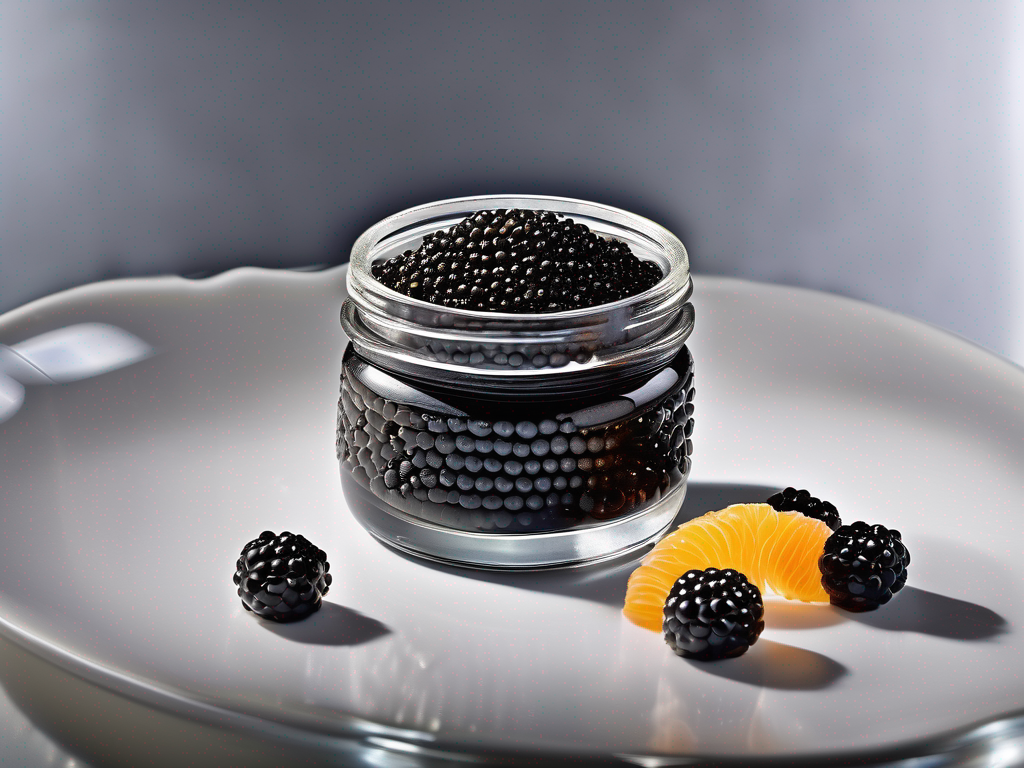
The Best Way to Store Osetra Caviar for Maximum Freshness
Get Your Free Food Safety Cheat Sheet
30 most common foods with instant answers. Print it and stick it on your fridge—completely free!
The Best Way to Store Osetra Caviar for Maximum Freshness
Osetra caviar is a prized delicacy known for its rich flavor and luxurious texture. To fully enjoy the exquisite taste of Osetra caviar, proper storage is essential to maintain its freshness and quality. In this comprehensive guide, we will explore the best practices for storing Osetra caviar to ensure it stays fresh for as long as possible. (Osetra caviar)
Understanding Osetra Caviar
Before delving into storage tips, let's first understand what Osetra caviar is. Osetra caviar is derived from the Osetra sturgeon, a species native to the Caspian and Black Sea regions. It is characterized by its medium to large-sized grains, ranging in color from dark brown to golden hues. Osetra caviar is prized for its nutty and buttery flavor profile, making it a favorite among caviar enthusiasts.
What Makes Osetra Caviar Special?
- Rich, buttery flavor
- Medium to large-sized grains
- Varied color spectrum
Factors Affecting Caviar Freshness
Several factors can impact the freshness and quality of Osetra caviar. Understanding these factors is crucial for proper storage.
Factors to Consider:
-
Temperature: Caviar is highly sensitive to temperature fluctuations. It is best stored at a consistent temperature between 28°F to 32°F (-2°C to 0°C).
-
Light: Exposure to light can degrade the quality of caviar. Always store caviar in a dark environment to prevent light-induced damage.
-
Air Exposure: Caviar should be shielded from direct air exposure to prevent oxidation. Seal the container tightly to minimize air contact.
-
Odors: Caviar can easily absorb odors from other foods. Store caviar away from strong-smelling items to preserve its delicate flavor.
Best Practices for Storing Osetra Caviar
Now that we understand the key factors affecting caviar freshness, let's explore the best practices for storing Osetra caviar to maintain its quality and flavor.
Storage Containers
- Use airtight containers to prevent air exposure and oxidation.
- Opt for glass or non-reactive containers to avoid imparting unwanted flavors to the caviar.
Refrigeration
- Store Osetra caviar in the coldest part of the refrigerator, typically the back of the bottom shelf.
- Maintain a consistent temperature between 28°F to 32°F (-2°C to 0°C) to preserve freshness.
- Avoid freezing caviar as it can alter the texture and flavor.
Packaging
- Keep the original packaging intact if unopened, as it is designed for optimal storage.
- Once opened, transfer the caviar to an airtight container and cover it with a layer of plastic wrap before sealing the lid.
Shelf Life
- Osetra caviar has a relatively short shelf life once opened, typically around 2-3 days.
- Consume caviar promptly to enjoy it at its peak freshness.
Safety Precautions
When handling and storing Osetra caviar, it is essential to follow safety precautions to prevent contamination and ensure food safety.
Safety Tips:
-
Cleanliness: Wash hands thoroughly before handling caviar to prevent cross-contamination.
-
Proper Handling: Use clean utensils to scoop caviar and avoid direct contact with hands.
-
Check for Spoilage: Discard caviar if it exhibits off-putting odors, sliminess, or unusual discoloration.
Conclusion
In conclusion, proper storage is key to preserving the freshness and quality of Osetra caviar. By following the best practices outlined in this guide, you can ensure that your caviar retains its exquisite flavor and texture for as long as possible. Remember to prioritize temperature control, minimize air exposure, and adhere to safety guidelines for an optimal caviar experience.
For more information on Osetra caviar and other gourmet foods, visit [our main food category](/food/osetra caviar). Enjoy your caviar in style and savor every luxurious bite! (Osetra caviar)
Authoritative Food Safety References
These agencies and university labs inform every tip and health precaution we publish.
USDA FoodKeeper – Cold Storage Guidelines
Official refrigerator, freezer, and pantry timelines maintained by the U.S. Department of Agriculture.
Visit USDA FoodKeeperFDA Produce Safety Rule & Grower Guidance
Field-to-fridge handling practices that prevent contamination of fruits, vegetables, and leafy greens.
Visit FDA Produce SafetyCDC Foodborne Illness Prevention Hub
Surveillance-backed guidance on pathogens, symptoms, and steps to reduce foodborne illness risk.
Visit CDC Food SafetyUC Davis Postharvest Technology Center
University research detailing optimal storage atmospheres for produce after harvest.
Visit UC Davis PostharvestPenn State Extension – Home Food Preservation & Safety
Peer-reviewed extension bulletins on safe canning, chilling, and reheating practices.
Visit Penn State ExtensionGet Your Free Food Safety Cheat Sheet
30 most common foods with instant answers. Print it and stick it on your fridge—completely free! Want more? Upgrade to the complete guide with 70+ foods.
Scan your food directly and get instant safety info using our AI-powered camera feature.